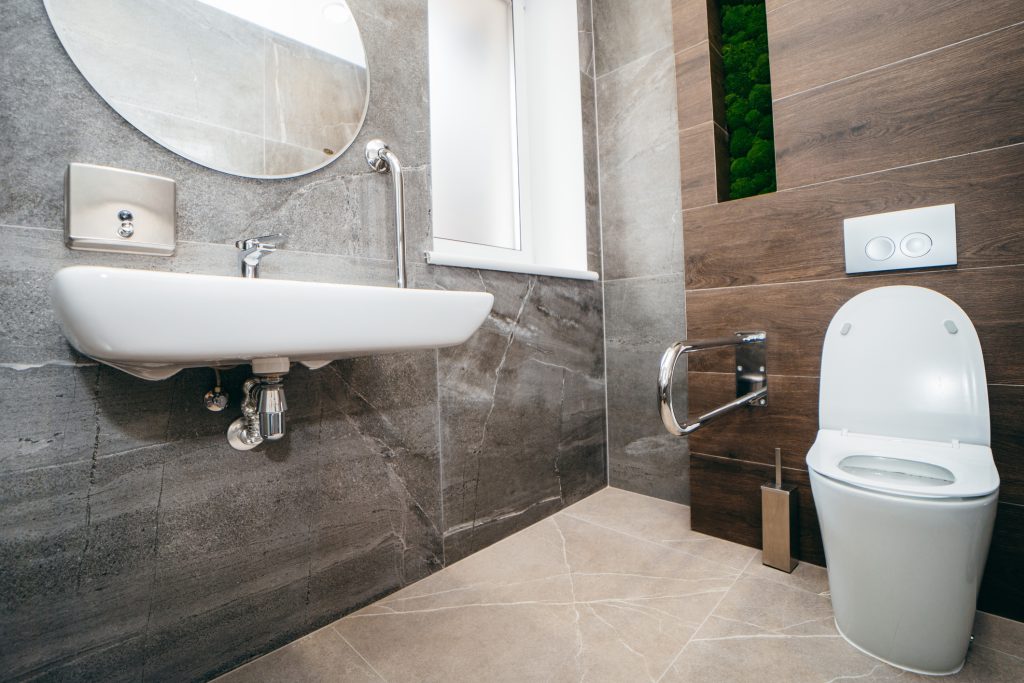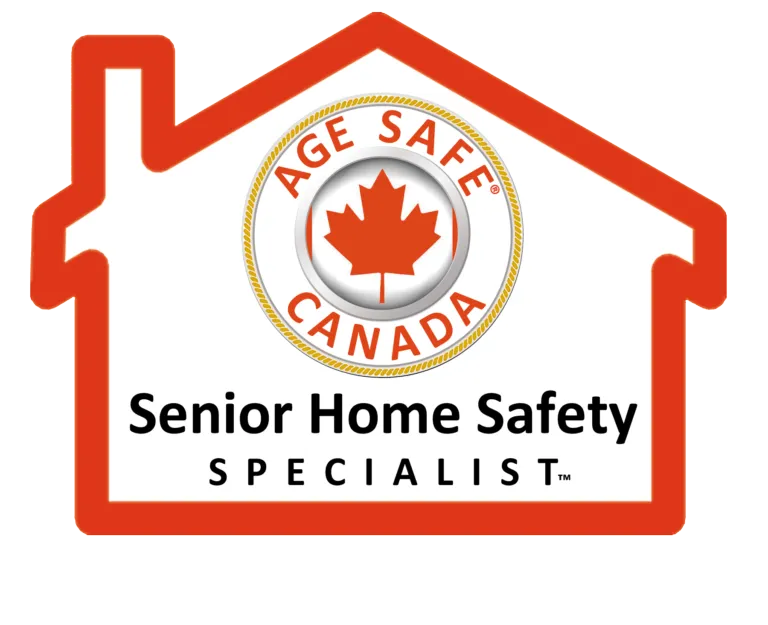Caring for seniors involves careful attention to detail, especially when it comes to personal hygiene and mobility in the bathroom. Whether you’re a professional caregiver or a dedicated family member, maintaining safety, dignity, and accessibility within a bathroom for seniors in Ottawa homes can make all the difference. Ottawa’s varying seasons, home designs, and aging population make thoughtful bathroom practices essential for comfort and security.

Prioritizing Bathroom Safety
Bathroom injuries are among the most common and dangerous for seniors. Slippery surfaces, lack of support, and poor lighting can lead to devastating falls. Caregivers should prioritize creating an environment that minimizes risk.
a. Non-Slip Flooring
Standard tiles become hazards when wet. Installing non-slip vinyl or textured tiles significantly reduces fall risk. For added safety, rubber-backed bath mats that adhere to the floor can provide traction near sinks and showers.
b. Grab Bars and Support Rails
Sturdy grab bars should be installed around the toilet, inside the shower, and near the bathtub. Avoid suction-cup types. Instead, opt for professionally installed, wall-mounted bars. Stainless steel or powder-coated versions are both durable and easy to clean.
c. Adequate Lighting
Soft, warm lighting improves visibility without being harsh. Nightlights along the hallway and inside the bathroom help seniors safely navigate nocturnal bathroom trips. Motion-sensor lights also reduce the risk of fumbling for switches.
Accessibility Considerations
Comfort and independence are important for seniors. Bathroom designs that allow for easy navigation go a long way in boosting confidence and preserving dignity.
a. Walk-In Showers
Traditional bathtubs with high ledges are often impossible for seniors to navigate. Walk-in showers, ideally with a zero-threshold entrance, are an excellent alternative. These minimize tripping hazards and are often easier to pair with mobility aids.
b. Handheld Showerheads
Adjustable, handheld showerheads give caregivers and seniors flexibility. They allow seated bathing and targeted rinsing without needing excessive movement. Look for options with ergonomic grips and long hoses.
c. Raised Toilet Seats
Low toilets can be hard on joints and muscle strength. Raised toilet seats or toilet frames make it easier for seniors to sit and stand without strain. Some models come with armrests for additional support.
Hygiene Management and Infection Prevention
Cleanliness is crucial, not just for comfort but for health. Seniors often have compromised immune systems, making hygienic practices vital.
a. Disposable Hygiene Products
Using disposable washcloths and bed pads simplifies cleanup and reduces the spread of bacteria. Ensure products are fragrance-free and skin-friendly to avoid irritation.
b. Proper Bathing Schedules
While daily showers might seem ideal, seniors may not need to bathe that frequently. Depending on skin condition and activity level, two to three times a week might suffice. On other days, spot cleaning and sponge baths can maintain freshness.
c. Sanitization Protocols
Use EPA-registered cleaners on bathroom surfaces. Wipe down high-touch areas like faucet handles, flush levers, and grab bars daily. Caregivers should wear gloves during any intimate hygiene tasks and wash their hands thoroughly afterward.
Encouraging Dignity and Independence
Bathroom activities are deeply personal. Preserving dignity can be just as important as ensuring physical safety.
a. Respecting Privacy
Always knock before entering and ask for permission to assist. Even if the senior has cognitive impairment, treating them with the same respect you’d expect for yourself maintains trust and emotional comfort.
b. Adaptive Clothing
Using garments designed for easy removal or access makes bathroom visits faster and less invasive. Velcro closures and elastic waistbands simplify the process.
c. Visual Cues
For seniors with memory challenges or vision impairments, visual indicators help. Use color-contrasting grab bars, toilet lids, and light switches to guide usage.
Personalized Bathroom Routines
Routine provides reassurance. By customizing bathroom schedules and steps to the senior’s preferences, caregivers can reduce anxiety and resistance.
a. Morning and Evening Rituals
Structured routines, such as tooth brushing at the same time every morning and face washing at night, reinforce habits. Familiarity supports those with early-stage dementia and provides a sense of control.
b. Custom Labels
Labeling drawers and shelves with words or images (like a picture of a toothbrush) makes it easier for seniors to find what they need independently.
c. Comfortable Water Temperatures
Seniors have thinner skin and may be more sensitive to temperature. Always test the water before assisting with a shower or bath. Consider installing anti-scald devices or thermostatic valves.
Emergency Preparedness
Emergencies can happen without warning. A proactive approach ensures that when they do, caregivers are ready.
a. Emergency Call Systems
Install wall-mounted emergency call buttons within reach of the toilet and shower. Alternatively, wearable emergency alert devices give seniors the power to summon help immediately.
b. First Aid Accessibility
Keep a small, well-stocked first aid kit in a waterproof container nearby but out of reach of children. Items should include bandages, antiseptic wipes, gloves, and an emergency contact list.
c. Fall Response Protocol
If a fall occurs, caregivers must remain calm. Speak to the senior to assess consciousness, avoid moving them unnecessarily, and call emergency services if needed. Familiarity with fall response techniques is essential.
Managing Cognitive Impairments in the Bathroom
Seniors with Alzheimer’s or other cognitive conditions may struggle with perception, memory, and reasoning. Bathroom spaces should reflect these challenges.
a. Avoid Mirrors
In some stages of dementia, mirrors can confuse or frighten seniors who don’t recognize their reflection. Removing or covering mirrors might ease anxiety.
b. Color Coding
Use bright, primary colors to highlight key features, such as a red toilet seat on a white base or a blue faucet handle. These cues assist those with visual-spatial challenges.
c. Gentle Reminders
Voice cues or sticky notes reminding seniors to flush, wash hands, or use soap support autonomy without confrontation.
Mobility Aids and Equipment
Not all homes can accommodate full renovations. However, the right tools can significantly improve bathroom functionality.
a. Transfer Benches
For seniors transitioning from a wheelchair or walker, transfer benches allow safe movement from outside to inside the tub or shower.
b. Shower Chairs
Lightweight, rust-proof shower chairs give seniors the ability to bathe while seated. Choose a model with back support and slip-resistant feet.
c. Toilet Safety Frames
If raised toilet seats aren’t ideal, safety frames with handles on either side provide additional leverage and support.
Seasonal Adjustments for Ottawa Homes
Ottawa winters can pose unique challenges, especially regarding indoor humidity, heating, and condensation in bathrooms.
a. Regulating Humidity
Use exhaust fans or dehumidifiers to control dampness. High humidity can make floors slick and contribute to mold growth, which affects respiratory health.
b. Heated Bathroom Fixtures
Heated towel racks or toilet seats may provide comfort and encourage use in colder months. Avoid electric heaters near wet zones unless they’re wall-mounted and approved for bathroom use.
c. Ensuring Warm Floors
Cold tile flooring discourages use. Area rugs with anti-slip backing, heated flooring systems, or insulated slippers help keep feet warm.
Training and Support for Caregivers
Equipping caregivers with skills and resources helps ensure consistent, safe bathroom care.
a. Educational Programs
Workshops or online courses focused on elder hygiene, safe transfers, and dementia care techniques build confidence and competence.
b. Peer Networking
Connecting with other caregivers in Ottawa provides a support system and new perspectives. Sharing tips about local resources or product recommendations can be incredibly beneficial.
c. Routine Assessments
Regular evaluations by occupational therapists help ensure that current bathroom setups continue to meet evolving needs. Adjustments may be necessary as a senior’s mobility or cognitive condition changes.
Why Choose Adaptive Living?
At Adaptive Living, we understand the unique challenges that caregivers face when supporting seniors in their daily bathroom routines. We don’t believe in one-size-fits-all solutions. Every individual has their own history, preferences, and mobility level, and every home has its style and constraints.
We collaborate closely with caregivers and families across Ottawa to create bathroom environments that are not only safe but also affirm independence and dignity. Whether it’s a small addition like a grab bar or a full renovation for better accessibility, our work is driven by compassion, expertise, and a deep commitment to enhancing quality of life.
From tailored equipment recommendations to thoughtful design choices, our team focuses on the specific needs of the senior and caregiver relationship. We’re proud to be a trusted resource in the Ottawa community and to support families who want the very best for their loved ones.
Let us help you turn daily care into moments of comfort, confidence, and ease.



